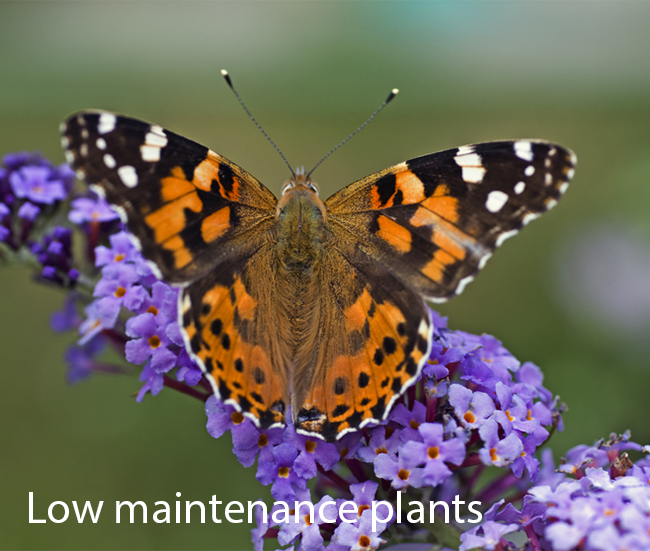|
How to Plant
When planting up a low-maintenance area, avoid using just one of something, because it makes maintenance far easier (when it comes to cutting back etc) if you’re dealing with lots of the the same plant. Planting in odd numbers always looks better than even numbers, so plant in threes, fives, sevens and nines (depending on the size of your garden) and avoid making blocks and blobs. Create ribbons and, if you can, aim for five or seven of the same thing and then place one lone plant away from all the main group - but following the same contour. This looks natural and extends the eye, making the area look larger.
Understanding Foliage
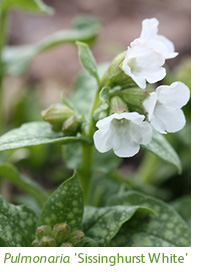 Really shady places are going to rely mainly on green foliage (as most flowering plants prefer a sunnier spot), but you can also add some variegated plants to create patterns, as well as some dapple-leaved plants such as pulmonarias. Green is never boring, because there are so many shades and the foliage comes in so many shapes and textures, but shadier areas like this tend to peak in spring before the overhead canopy becomes too well established and dense. The golden rule is to use variegation wisely. A green and gold blend is normally best, but only in small measures. Really shady places are going to rely mainly on green foliage (as most flowering plants prefer a sunnier spot), but you can also add some variegated plants to create patterns, as well as some dapple-leaved plants such as pulmonarias. Green is never boring, because there are so many shades and the foliage comes in so many shapes and textures, but shadier areas like this tend to peak in spring before the overhead canopy becomes too well established and dense. The golden rule is to use variegation wisely. A green and gold blend is normally best, but only in small measures.
Sunny places will feature lots of silver foliage because this pale leaf colour discourages heat absorption. Most flowers will appear in summer and there will be lots of blue and purple bee and butterfly flowers. Try to use some non-running, non-seeding grasses such as Miscanthus sinensis and add some leafy highlights using darker foliage. Cotinus coggygria ‘Royal Purple’ for example will add an ornate splash of wine red.
Partial shade is versatile and you’ll get away with most things here. You’ll be able to grow flowering shrubs and many will be deciduous, forming a perfect overhead canopy for spring-flowering plants.
Sunny Situations
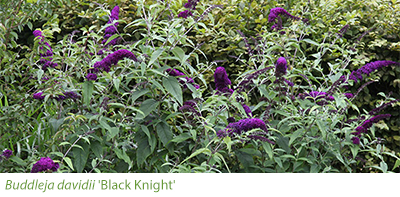
Buddleja should feature here, because it will attract droves of butterflies in July, August and September. It isn’t completely maintenance free however, because it really should be deadheaded as the flowers fade to encourage more flower and no seedlings. It will also need cutting back in March or April, by two-thirds, to keep it more compact. This will lengthen its lifespan too. Good, award winning forms of Buddleja davidii include ‘Pink Delight’, and the old favourites ‘Black Knight’ and ‘Royal Red’. These make large shrubs (3m x 5m) and they will flower for weeks. A smaller alternative called ‘Lochinch’ (2.5m x 3m) needs lighter pruning and it’s far more delicate in form, with fragrant, lavender-purple flowers each with an orange eye. The foliage is smaller too and much of it stays on in winter.
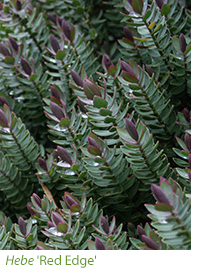 Good front of the border, sun-loving candidates are hebes and these have attractive evergreen foliage that shines in winter. They are bred from New Zealand species so need a warm position and good light to thrive. ‘Heartbreaker’, a new hebe with variegated green and cream narrow leaves, has pink growth so it’s very colourful. ‘Red Edge’, a neat and crisp hebe, has glaucous leaves with red edges and tips. Both will make a dome about 60cm in height. These are deliberately bred for foliage, and if you like the box ball effect, H. rakaiensis forms a tight rounded evergreen shrub with light green foliage. Good front of the border, sun-loving candidates are hebes and these have attractive evergreen foliage that shines in winter. They are bred from New Zealand species so need a warm position and good light to thrive. ‘Heartbreaker’, a new hebe with variegated green and cream narrow leaves, has pink growth so it’s very colourful. ‘Red Edge’, a neat and crisp hebe, has glaucous leaves with red edges and tips. Both will make a dome about 60cm in height. These are deliberately bred for foliage, and if you like the box ball effect, H. rakaiensis forms a tight rounded evergreen shrub with light green foliage.
Others hebes produce lots of flower throughout summer and the variegated cream and white ‘Silver Queen’ has large purple flowers. Given time, it will make a largish, rounded bush about one metre in height. ‘Pascal’ is half the size, with lavender flowers and grey foliage that turns to burnished burgundy in winter. ‘Garden Beauty’ is a similar height, but the green foliage is topped by masses of purple flowers and it’s said to be hardier than many.
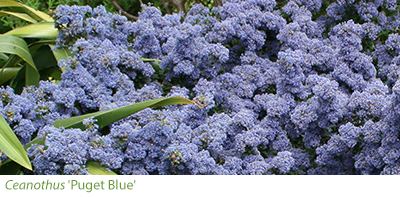
If you’ve got more space and a sheltered spot in sun, away from winds, Californian lilac or ceanothus, will flourish for you. The dark, crinkled, evergreen foliage looks good in winter and in summer deep blue flowers appear. ‘Puget Blue’ gets so smothered in flower that it’s impossible to see the leaves sometimes. It will reach 3m in height. ‘Skylark’ is half the height and equally good.
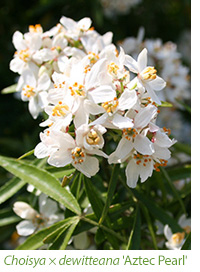 Choisyas are also sun-tolerant and ‘Aztec Pearl’ will provide you with divided foliage and fragrant orange-blossom flowers in late spring. There’s now a pink-flowered form, ‘Apple Blossom’, with pink and white flowers and this reaches just over a metre in height. Choisyas need good light to flower well, but can be grown in partial shade for their foliage. ‘Sundance’ is a yellow-leaved form that you’ll either love or hate. Choisyas are also sun-tolerant and ‘Aztec Pearl’ will provide you with divided foliage and fragrant orange-blossom flowers in late spring. There’s now a pink-flowered form, ‘Apple Blossom’, with pink and white flowers and this reaches just over a metre in height. Choisyas need good light to flower well, but can be grown in partial shade for their foliage. ‘Sundance’ is a yellow-leaved form that you’ll either love or hate.
You could also use low growing Mediterranean subshrubs such as Artemesia ‘Powis Castle’, lavenders, perovskias and culinary sages. The purple-leafed form, Salvia officinalis ‘Purpurascens’ and the dark-leaved Sedum ‘Purple Emperor’ would add smoky highlights among the silvers and these could be punctuated by Geum ‘Totally Tangerine’. This flowers from May until late, sending up wiry wands of apricot flowers.

Weed-smothering silvery perennials include nepetas and ‘Six Hill’s Giant’ will cover a square yard of ground once the stems flop. The much smaller Nepeta × faassenii ‘Junior Walker’ is better where space is limited. Cut ‘Six Hills’ back to nothing in July and it will do it all again, so it’s a very useful plant. Stachys byzantina 'Silver Carpet’ forms a dense mat of foliage and should not flower, or there’s the larger-leaved ‘Big Ears’. Lamium maculatum 'Beacon Silver' will take full sun, but looks best in partial sun because the leaves stay fresher. And this is a good bee plant.
 Ground cover hardy geraniums for full sun include Geranium ‘Rozanne’, a mid-blue that makes late summer and autumn very special. ‘Dreamland’ is a new lavender-pink that also sprawls. Both are sterile so there are no seedlings, just lots of flowers. ‘Light Dilys’ a clear pink, will do the same job but cover less ground. Ground cover hardy geraniums for full sun include Geranium ‘Rozanne’, a mid-blue that makes late summer and autumn very special. ‘Dreamland’ is a new lavender-pink that also sprawls. Both are sterile so there are no seedlings, just lots of flowers. ‘Light Dilys’ a clear pink, will do the same job but cover less ground.
Shade
Shade can be difficult, particularly if overhead trees dry up the soil. If this is the case, plant smaller plants and try to do this in September, when the new plants can benefit from winter rains, rather than suffering spring drought. Daffodil bulbs can be planted then, and they will cope with shade well - provided it’s not too dense.

The backbone planting will tend to be evergreen and aucubas, known as Japanese laurels, are excellent because they establish themselves quickly but don’t become ugly in later years. They can be cut back hard and survive. ‘Rozannie’ has luscious mid-green leaves sharply toothed round the edges. The most commonly grown one, ’Crotonifolia’, has yellow-spotted green leaves that will light up dark shade. You could also use Highclere holly, Ilex x altaclerensis ‘Golden King’, which has variegated green and yellow foliage. It’s faster growing and less prickly-leafed than English holly (I. aquifolium), It’s easy to clip into mop heads if you’re after a formal look. Although delicious Hydrangea paniculata is also accommodating in shade and ‘Limelight’ works well in mixed planting.
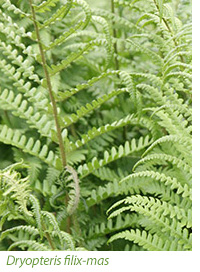 Underplant your shady areas with hardy ferns such as polypodiums, polystichums and dryopteris. Of these Dryopteris filix-mas is the most shade tolerant, and there’s a crested form called ‘Cristata’. The new crosiers of dryopteris unfurl in late April, coinciding with our native bluebell (Hyacinthoides non-scripta). Add small periwinkles, named forms of Vinca minor, because they create a tight mesh of roots. ‘La Grave’ has green foliage and purple-blue flowers. Vinca minor f. alba 'Gertrude Jekyll’ is a delight in shade with its pure white flowers and green foliage. 'Ralph Shugert’ has violet flowers and yellow-margined green leaves. Underplant your shady areas with hardy ferns such as polypodiums, polystichums and dryopteris. Of these Dryopteris filix-mas is the most shade tolerant, and there’s a crested form called ‘Cristata’. The new crosiers of dryopteris unfurl in late April, coinciding with our native bluebell (Hyacinthoides non-scripta). Add small periwinkles, named forms of Vinca minor, because they create a tight mesh of roots. ‘La Grave’ has green foliage and purple-blue flowers. Vinca minor f. alba 'Gertrude Jekyll’ is a delight in shade with its pure white flowers and green foliage. 'Ralph Shugert’ has violet flowers and yellow-margined green leaves.
Euphorbia amygdaloides var. robbiae, a creeping substantial spring-flowering euphorbia with rounded heads of yellow flower, pachysandra and Pulmonaria ‘Trevi Fountain’ will also all tolerate shade and thrive once established.
Partial Shade
Most plants tolerate partial shade, and many deciduous spring-flowering shrubs enjoy it. Some of the easiest viburnums are early flowering and scented. They include V. x juddii, a smaller rounded shrub with dark green leaves and rounded heads of pink-budded white flowers that typically appear in April and May. V. x burkwoodii is more evergreen with glossier foliage, and it’s larger, and it flowers earlier. Sometimes the flowers appear by January.
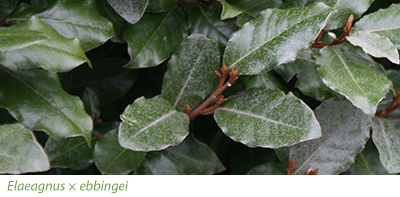
You could also use Ribes sanguineum, the flowering currant. ‘Elkington's White’ is a new one, with an irresistible hint of green to the flowers, and ‘Pulborough Scarlet’ is a strident pink-red with fresh green leaves that join in once the flowers begin. Eleagnus × ebbingei will do well too and this grey-green evergreen produces scented flowers in November. Spring woodlanders, low-growing plants that flower in April, and spring bulbs that naturalise, will all thrive under deciduous shrubs.
Slopes
These are difficult to garden on, but if the slope gets a reasonable amount of sunshine, ground cover roses can work really well - and they are healthy and floriferous. They need trimming back once a year but many use a hedge trimmer. The Flower Carpet roses are all excellent and there are pink and white forms. The County Series, including the white ‘Kent’ and the pink semi-double ‘Surrey’ are equally good. No deadheading, feeding or spraying is required because all these roses are bombproof. |
Things to do
 |
Sow Biennials
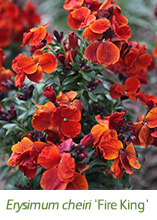
Time to think about sowing biennials including wallflowers, Digitalis purpurea and sweet Williams. You can either use trays of seed sowing compost and sprinkle the seeds on top, or sow in a drill in the ground. You can also use modular trays for larger seeds such as sweet William and wallflower. It’s also time to sow primula and aquilegia seeds, and these can be sprinkled straight onto the ground and raised outside.
|
 |
Pick and deadhead

If you’ve grown sweet peas, keep picking them, so that more come. Deadhead any spent flowers on perennials and annuals as this will encourage more flowers. Tools with brightly coloured handles (in case you mislay them) are best for snipping.
|
 |
Plant a second crop of beans

Plant a second crop of beans on a new tripod for a September harvest. Use a red-flowered bean such as ‘Lady Di’. Use 8 tall canes per tripod and plant three seeds per cane, putting the seeds straight into the ground. You could also grow the climbing French bean 'Trionfo Violetto’ on some canes. Watch out for slugs though.
|
 |
Clip box topiary

Clip box hedges in June, preferably on a damp day when there’s less resinous sap. Use sharp shears, wiping them regularly, and pick up every clipping from the ground and frisk the box to get the snippets out of the plant. This will deter box bight because there’ll be no rotting material. Feed all box topiary and newly planted yew with a seaweed feed such as Empathy multipurpose seaweed stimulant. This will stimulate growth, toughen up the foliage and keep it looking greener.
|
 |
Slugs and snail alert

Slugs and snails are on the go. Frisk all kniphofias, evergreen eryngiums, irises and hemerocallis and destroy any you find. Keep the hoe going, to disrupt the soil and bring any eggs to the surface.
|
 |
Divide autumn-flowering perennials
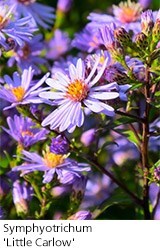
Try to do this when the plants are beginning to grow away. Choose the vigorous outer pieces and discard the middle and replant, with a sprinkle of bonemeal. Water well if a spring drought looks likely. |
|
|
Essential Kit for June
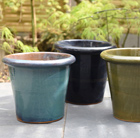
Glazed flower pot
from £24.99
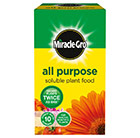
Miracle-gro plant food
£5.99

Roundup weedkiller gel
£8.99 £5.99
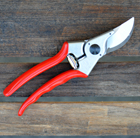
Felco original secateurs (model no 2)
£57.99 £53.99
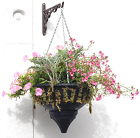
Pair of self-watering hanging baskets
from £12.99
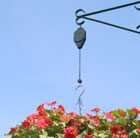
Hi-Lo hanging basket raising / lowering pulley
from £7.99
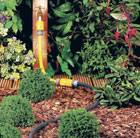
Hozelock standard soaker hose
£72.69 £39.99

Grow-bag cane frame set
from £9.49
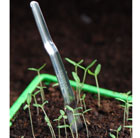
Seedling transplanting widger
£4.99
|
|



